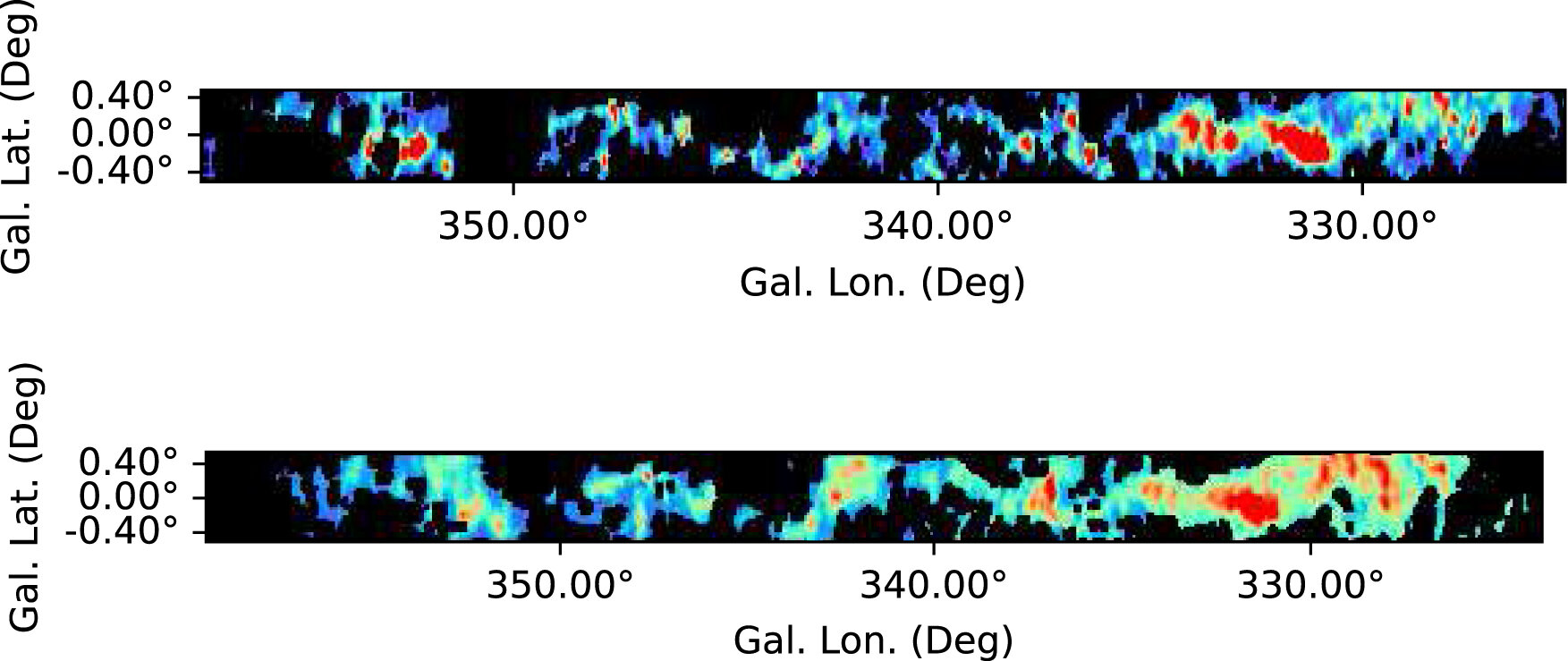Skip to comments.
'Gangotri wave' connecting two of Milky Way's spiral arms discovered
Phys dot org ^
| November 27, 2021
| Bob Yirka
Posted on 11/27/2021 12:15:14 PM PST by SunkenCiv
Prior research has shown that other galaxies have features called feathers—long gas filaments with barbs that look from Earth like feathers. But because it is very difficult to study the Milky Way galaxy from an Earth perspective, no such features have been seen, until now.
In their work, the researchers were studying concentrations of carbon monoxide gas in data from the APEX telescope in San Pedro de Atacama, Chile. They noticed concentrations that had not been seen before, and after taking a closer look, discovered that it was part of a large gas formation that extended from near the center of the galaxy outward, connecting two of the arms that give the galaxy its distinctive look.
The researchers named the formation the Gangotri wave—an homage to the massive glacier whose melting gives rise to the Ganges River. In India, the Milky Way galaxy is known as Akasha Ganga. The newly discovered feather spans approximately 5.6764e+16 to 1.22989e+17 kilometers in reaching between the two arms and is approximately 1.6083242e+17 kilometers from the rotational center of the galaxy. They have also estimated its mass to be approximately equal to nine suns. Prior to the new discovery, all of the gas tendrils found in the Milky Way have aligned with the spiral arms.
The researchers found that the Gangotri wave... zig-zags back and forth along its length in a pattern similar to a sine wave. The researchers were not able to explain the strange phenomenon but note that some force must be at play—a force that is likely to be the focus of many upcoming research efforts. The team plans to continue their study of gases in the Milky Way, this time actively looking for new feathers.
(Excerpt) Read more at phys.org ...
TOPICS: Astronomy; Science
KEYWORDS: astronomy; gangotriwave; science; xplanets
(Top) 13CO integrated intensity map from the SEDIGISM survey in the velocity range −95 to −75 km s−1 showing a wave-like feature. (Bottom) 12CO integrated intensity map from the ThrUMMS survey in the same velocity range as the top panel, smoothed to an angular resolution of 5'. Images are stretched along the y-axis for a better visualization.Figure 1 |

1
posted on
11/27/2021 12:15:14 PM PST
by
SunkenCiv
To: KevinDavis; annie laurie; Knitting A Conundrum; Viking2002; Ernest_at_the_Beach; Mmogamer; ...
2
posted on
11/27/2021 12:15:39 PM PST
by
SunkenCiv
(Imagine an imaginary menagerie manager imagining managing an imaginary menagerie.)
To: SunkenCiv
I think we used to have a gango tree in our back yard.
3
posted on
11/27/2021 12:26:29 PM PST
by
ComputerGuy
(Heavily-medicated for your protection)
To: SunkenCiv
I thought the police have identified the gangotri wave as the people doing the mass looting of department stores.
To: SunkenCiv
5
posted on
11/27/2021 1:07:26 PM PST
by
Openurmind
(The ultimate test of a moral society is the kind of world it leaves to its children. ~ D. Bonhoeffer)
To: Enterprise
To: SunkenCiv
more:
THE FOLLOWING ARTICLE IS OPEN ACCESS
A Kiloparsec-scale Molecular Wave in the Inner Galaxy: Feather of the Milky Way? [with footnotes]
https://iopscience.iop.org/article/10.3847/2041-8213/ac341f
from the above article, “feathers are common in prototypical Sc galaxies as well as in Sb galaxies.”
Is the Milky Way a Sb or Sc galaxy?
7
posted on
11/27/2021 3:03:39 PM PST
by
blueplum
("...this moment is your moment: it belongs to you... " President Donald J. Trump, Jan 20, 2017) )
To: blueplum
8
posted on
11/28/2021 1:59:20 AM PST
by
SunkenCiv
(Imagine an imaginary menagerie manager imagining managing an imaginary menagerie.)
Disclaimer:
Opinions posted on Free Republic are those of the individual
posters and do not necessarily represent the opinion of Free Republic or its
management. All materials posted herein are protected by copyright law and the
exemption for fair use of copyrighted works.
FreeRepublic.com is powered by software copyright 2000-2008 John Robinson

